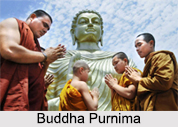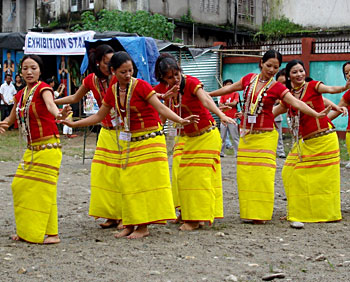 Baishagu Festival is a festival celebrated in the state of Assam, a north eastern state of India. More specifically, this festival is commonly celebrated with much pomp and enthusiasm by the tribal group called Bodo Kacharis. The Bodo are the largest scheduled tribe in Assam. They are known to be a branch of the Indo- Mongoloid family. They migrated south from Tibet and Burma and were one of the first to settle in Assam. This tribal group is concentrated in the lower Assam districts of Chirang, Kokrajar, Bingaigaon etc. This festival is celebrated during the middle of the month of April, much at the same time when Baisakhi is celebrated in Punjab and the Assamese are engaged in celebrating Rongali Bihu. The Baishagu is considered to be the most cherished festival of the Bodo tribe and is popular for its myriad colors and merry making.
Baishagu Festival is a festival celebrated in the state of Assam, a north eastern state of India. More specifically, this festival is commonly celebrated with much pomp and enthusiasm by the tribal group called Bodo Kacharis. The Bodo are the largest scheduled tribe in Assam. They are known to be a branch of the Indo- Mongoloid family. They migrated south from Tibet and Burma and were one of the first to settle in Assam. This tribal group is concentrated in the lower Assam districts of Chirang, Kokrajar, Bingaigaon etc. This festival is celebrated during the middle of the month of April, much at the same time when Baisakhi is celebrated in Punjab and the Assamese are engaged in celebrating Rongali Bihu. The Baishagu is considered to be the most cherished festival of the Bodo tribe and is popular for its myriad colors and merry making.
Purpose of Celebrating Baishagu Festival
The Baishagu Festival is celebrated for the purpose of welcoming the New Year.
Procedure for Celebrating Baishagu Festival
On different days of the Baishagu Festival, different activities are performed. More specifically, a cow is worshipped on the first day the festival.
The next day this festival is marked by the youngsters of each family bowing down to their parents and elders, respectfully. This day is the starting date of the month of Bohag. They then offer chicken and zou (rice and beer) to Lord Shiva, also known as Bathou. This festival is dedicated to Lord Shiva. Offering chicken and zou to Him is a way of worshiping the supreme deity.
A noteworthy feature of this festival is the Bagarumba dance. This dance is considered to be the most attractive dance of the Bodo community and is also known by the name of Bardwisikhla. Different dance forms are typified and identified by different types of dress codes or costumes. Similarly, Bagarumba dance form can also be recognized in terms of Dokhnas (draped skirts) chaddar (cloth used as a bodice) and jhumra (shawls). They are the prerequisites to perform this dance form for the girls. The girls look like pretty, flighty butterflies as they dance with their arms outstretched, their shawls creating the impression of wings. It is for this reason that this dance form is also known as the Butterfly Dance. During the performance of this dance form, the men are engaged in playing traditional musical instruments like the serja (a bowed instrument), sifung (flute), tharkha (a piece of split bamboo) and khum (a long drum made of wood and goatskin). They also utter "bagurumba hay bagurumba", while playing the musical instruments. Characteristically, the music is serious and the lyrics that accompany it are a simple description of the world of nature. It creates a cheerful and festive mood, thus stimulating enjoyment and merrymaking. The prime reason behind the performance of this dance is to pacify the supreme god of the Bodos named, Bathow. This God is symbolized by the Sizu tree. This festival is also perceived as a source of relief for the girls from their normal hardworking village life. A person of any age can participate in this dance. It is also evident that gender of a person is not at all a bar during the performance of this dance form.
The Baishagu festival is closed with community prayers offered at the Garja Sali. This is a place of common worship and is located outside the village at the corner of a grazing field.
Related Articles:
Indian Regional Festivals
Festivals of Assam
Festivals of Kerala
Festivals of Orissa
Festivals of Tamil Nadu
Festivals of Rajasthan
Festivals of Karnataka
Festivals of Chhattisgarh
Festivals of Gujarat



















